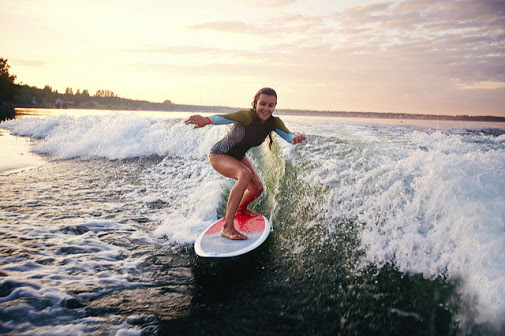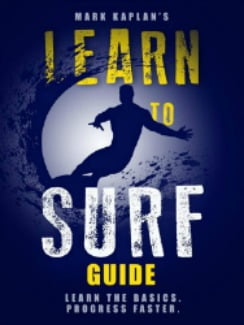Are There Short Board Surf Lessons?
I am asked are there short board surf lessons. It is really a good question. Lessons tend to run from teaching the basic fundamentals to beginners to advanced lessons for those who can ride shorter boards.
What happens to students in between? There is a slow progression from riding foam waves on a soft top board to riding real waves on a soft top board to then progressively moving to shorter boards and bigger real waves.

The Progression to Shorter Surf Boards
After beginners have mastered riding foam waves on soft top boards, the next step is to progress to paddling out to bigger foam waves and beginning the first small real waves. My short board surf lessons for students begins with teaching them the timing and working them through the courage necessary to catch real waves.
Why does it take courage to catch real waves? Foam waves arrive flat and there is a big window to catch them. A real wave forms in a few seconds and if you are not in the right position, it will crash on you or you will crash in the form of a pearl (nose under water).
Real waves move faster and tilt the nose of the board down. The pop up has to be smooth, confident and perfect. With the board moving faster as the arc of the wave accelerates the board, any missteps causes the board to lose stability quickly.
The real wave surfer first notices where waves are forming. Then they paddle to that area. Other surfers are often and indication, but they may pick different spots depending on the kind of board they are riding. When the wave begins to form, the surfer paddles to the spot where the wave will come under the board.
This is really the key to catching real waves. Start with a foam board and after a number of maneuvers are learned like bottom turns, cut backs, and accelerating, then the surfer can start to move to shorter boards 6 inches at a time maintaining the width and thickness of the soft tops.
A great first hard board move is the fun board at 7′ 6″ long at 21+” wide and 2 3/4″ thick. Learning on this board can last a long time before moving shorter. When you move shorter, paddling is more difficult, the arc of the wave has to be steeper, and popping up is less stable. If you don’t surf often, the move won’t be rewarding.
Learn More
My New Surfing Course in an E-Book plus Demo Video or Audio Version
Get the 18 Chapter, 7,500 word Course that can prepare you for a lesson or give you the fundamentals if you are going to try it on your own. 10 years of teaching 350 students a year has given me the insights on the most precise measures you must follow for success. This course is what I teach on the dry land and in water instruction. The Course includes a 15 minute video on my dry land and in water demonstration. Only $4.95
Buy the E-Book and start learning $2.99. Learn to Surf
Buy the Paperback on Amazon $7.95
Get Learn to Surf Course in 29 minute AUDIO. Great prep for a lesson, reviewing after a lesson, learning on your own, refreshing after not having surfed for a while. See Table of Contents. Only $7.95.

For Oceanside Surf Lessons, see the Home Page
See the Post Search Lessons Teach Fundamentals
See the Post Catching Real Surf Waves
See my Dry Land and in Water Demo video
See my other Surf site for more Posts
I have lowered the price of Courses and Books for the lock down price of $2.99
80 page Learn to Surf Book
![Surf Instructions Beginner to Advanced: Learn to Ride Waves by [Kaplan, Mark]](https://images-na.ssl-images-amazon.com/images/I/51HswFtoBQL.jpg)